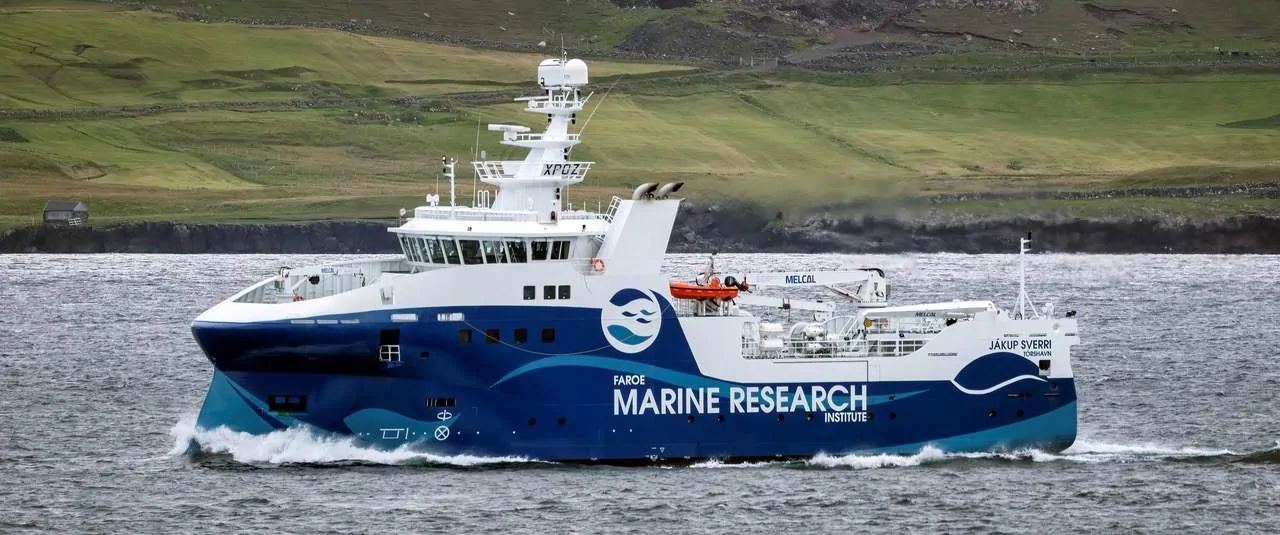Built for the Faroe Marine Research Institute – Havstofan – new research vessel Jákup Sverri has a strong claim to be the quietest ship in the world.
Jákup Sverri has been delivered this week following a two-year construction period – a year to build the hull at the WBS yard in Lithuania, followed by a year’s outfitting at MEST’s yard at Skála in the Faroe Islands.
Including the bridge level, Jákup Sverri has seven decks. It is equipped with modern factory, research and laboratory facilities and accommodation on board is for thirteen crew and twelve scientists/passengers in 13 single and six double cabins, plus a two-berth sick bay. A great deal of attention has been paid to ensuring high levels of comfort, with spacious group areas, meeting rooms and fitness facilities.

The 55.09 metre LOA by 13.60 metre breadth Jákup Sverri is built to the Silent-R classification for extremely low noise levels and has been independently tested for underwater noise, and the results are that this could be the world’s quietest ship. The focus on virtually silent running is to ensure optimal performance and precision during marine surveys. In order to have as low underwater noise radiation as possible, the ship’s design, hull, propeller, engines and other equipment are harmonised to produce minimal underwater noise.
Jákup Sverri has two Wärtsilä 8L20 generator sets providing power to the Wärtsilä SAM el-propulsion motor which drives a Wärtsilä 5 bladed 3600mm D fixed-pitch propeller, capable of providing a 27-tonne bollard pull at 5 knots. In addition, there is a 379kVA Scania harbour/emergency set. The combined tunnel/azimuth thruster is an 800kW Brunvoll unit, contributing to Jákup Sverri’s dynamic positioning capability.
Jákup Sverri is equipped with a drop keel, allowing acoustic equipment to be lowered three meters below the keel, keeping it clear of interference from surface noise.
Intended primarily to conduct surveys of marine fish stocks, Jákup Sverri could also conduct seismological surveys for the Faroese government. It is equipped for demersal and pelagic trawling, plankton sampling, hydrographical, towed body, seismic, ROV and environmental operations.
The MEST Shipyard was involved in the entire construction process, providing the design, detailed drawings, strength calculations up to and including the project management throughout the process, as well as acting as the main contractor responsible for the entire construction process.
The hull construction in Lithuania was monitored closely by staff from MEST. In addition to the yard’s own workforce, a number of sub-contractors have been responsible for deliveries and installation of various items of equipment on board.





